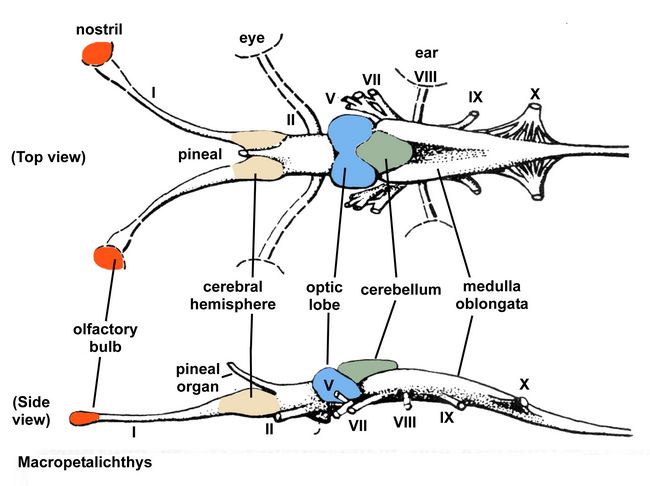Athena Review Image Archive ™
Placoderm brain and cranial nerves

Brain of Devonian placoderm Macropetalichthys (Romer 1966, fg.9, after Stensio).
Macropetalichthus
was a Devonian Placoderm ("plate-skin"), a class of armored fish that
were among the first jawed vertebrates (gnathostomes), who lived in the
Early Silurian through Late Devonian periods (443-359 mya). Their skull
was flattened (the name means "large, flattened fishes" ) and they
were bottom-feeders.
This diagram shows the brain of Macropetalichthus as seen from above (dorsal view) and from the side (lateral view). Among the main components are the brain stem or medulla oblongata; the cerebellum; the optic lobe or visual cortex; the cerebral hemisphere; the pineal organ, a direction-finding sense; and the olfactory bulb. Also shown are several of the cranial nerves, including I (nostril), II (eyes), and VIII (ears).
This basic organization of cranial nerves has
persisted through the history of vertebrates. The underside of the
human brain, revealing the brain stem, shows the cranial nerves in the
same order.
References:
Romer, A.S. 1966. Vertebrate Paleontology. University of Chicago Press.
Stensio, E. 1925. The Downtonian and Devonian Vertebrates of Spitzbergen. Stockholm.
Copyright © 1996-2020 Rust Family Foundation (All Rights Reserved).